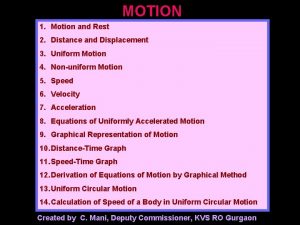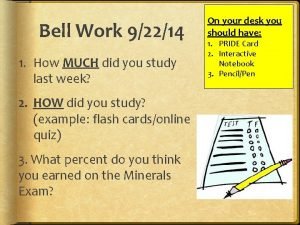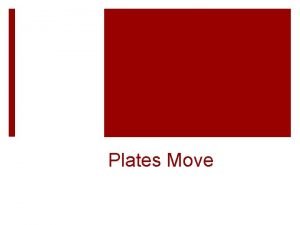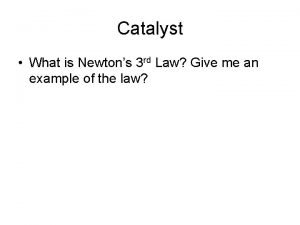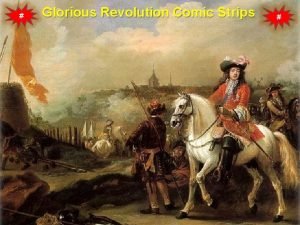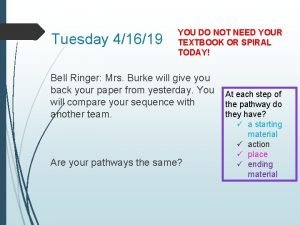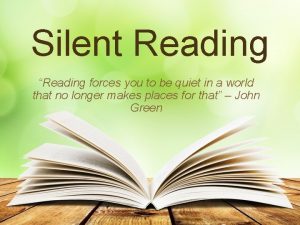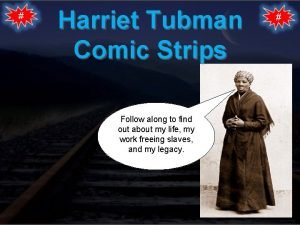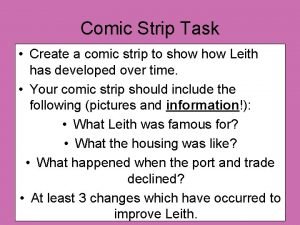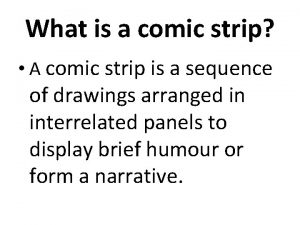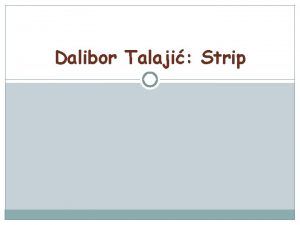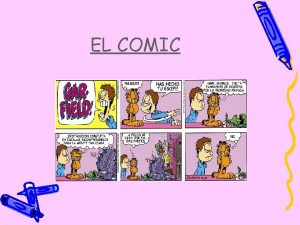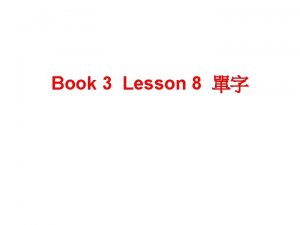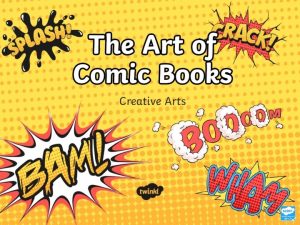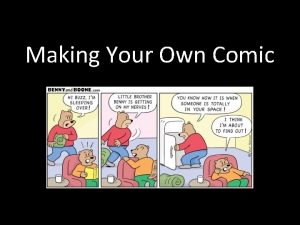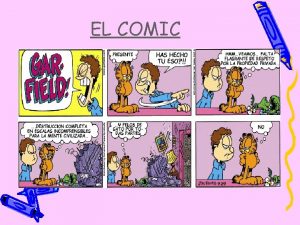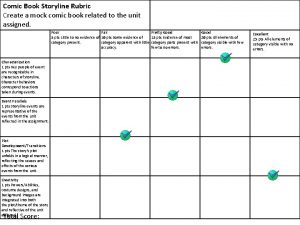Comic Strip Conversations What is a Comic Strip

















- Slides: 17

Comic Strip Conversations

What is a Comic Strip Conversation? • A communication tool to illustrate and simplify conversations with simple drawings. • Developed by Carol Gray (SLT) • Resource “Comic Strip Conversations” Publisher: Future Horizons • An effective tool for parents and professionals working with children with ASD, social communication difficulties and other developmental disabilities. • Emphasis placed on what people may be thinking – “theory of mind”

What is a Comic Strip Conversation? • Helps child to “read between the lines” infer take the perspective of others follow the quick exchange of information in a conversation tune in to what they missed • Uses simple drawings and symbols • Colour used for emotions of statements, thoughts and questions • Can be used with Social Stories or independently

Background & Rationale: Why use Comic Strip Conversations? • Based on communicative drawings of 10 year old child who would draw to communicate frustrating situations to her mother who would draw in return. • Evidence shows that visualisation and visual supports help children with ASD and social communication difficulties. • Students with ASD and social communication difficulties have difficulties identifying the beliefs and motivations of others (Baron-Cohen). • Perspective-taking is often difficult for students with social communication difficulties (“walking in your shoes” / seeing situations from the other person’s perspective)

What do we need? • Key person & child (SENCo; Teacher; Teaching Assistant; Learning Mentor; Parent) • Quiet room/area of school/ at home • Sit side by side or at right angles work best • Selection of drawing and writing materials e. g. white board, paper, chalkboard/ ipad • Paper you can save for review & discuss conversations at a later time.

Principles • Demonstrate that drawing while talking is an ok way to communicate • Practise before to feel comfortable with the method • Student takes the lead – adult guides without taking the lead • Both have access to writing materials but the student is encouraged to write/draw/talk the majority of the time. • Initially may have more “interview format” ; adult asks/writes the questions student draws/writes/talks in return • Aim over time: less like an interview more like a conversation!

Introducing Symbols • “We’re going to draw while we talk today” • Write and draw symbols at the same time • Ask them what they would like to talk about or pick something you know they’ll be interested in e. g. trip to Disneyland; weekend activities • Remember to include “small talk” in your drawings (e. g. talk about weather)

Symbols Dictionary • Conversations Symbols Dictionary – eight symbols • Introduce gradually (talking, thoughts, listening) • Symbols represent basic conversation concepts o Everyone talking at once o Listening (as a group) o Interrupting o LOUD & Quiet Words o Talking (several people) o Talking (one person) o Listening (one person) o Thoughts

Example using one symbol: thoughts

Personal Symbols Dictionary • Collection of symbols frequently used by the students • Includes symbols for specific, places and concepts that are important to the student & frequent part of their lives Places e. g. home, the park Concepts e. g. time, first People e. g. Mum, teacher

Talking about a situation • Comic Strip conversations can be used to talk through situations that are causing difficulty for the student e. g. § lunchtime dispute § not being first to line up for playtime § a social misunderstanding such as sharing vs. taking § Can be used to talk about future situations (but be mindful of rigid thinking – allow for flexibility) • Use smaller cards to help sequence the ‘conversation’ (place these onto a bigger sheet with location symbol in the corner). • Start with a location symbol e. g. playground, classroom, lunch hall. • Use questions to ‘complete the picture’

8 questions to ask 1) Where were you? (use symbol - student draws a person) 2) Who else was there? (student draws others) 3) What were you doing ? (student draws relevant items and actions) 4) What happened? What did others do? (student draws relevant items and actions) 5) What did you say? (use talk symbol) 6) What did others say? (use talk symbol) 7) What did you think when you said that? (use thought symbol) 8) What did others think when they said/did that? (use thought symbol)

Taking Perspectives & Concluding the Conversation **Perspective of the professional / parent is shared with the student – wait for natural opportunities to provide support. For example, if the student misreads a situation or makes errors in relation to others perspectives the adult can accept the answer as valid but introduce another idea. ** • Summarise • Identify new responses/solutions • Pros and cons of different solutions could be considered.

Incorporating colours for feelings • Introduce gradually – one at a time • Be mindful of other intervention approaches that use colours for emotions, e. g. Zones of Regulation • If the child is used to a specific colour code, stick with that code – do not swap colours • Be mindful of child’s language level/ understanding • Start with basic first happy - green; sad – blue ; angry - red • e. g. happy – green “ I was so happy at my party”. • Consider offering the child a choice of colours – be consistent once chosen

Colours (suggestions) • • Green : good ideas ; happy ; friendly Red : Bad ideas ; anger ; unfriendly Blue : sad ; uncomfortable Yellow : frightened ; anxious ; scared Additional colours • Brown : comfortable ; cozy • Purple : proud • Black : facts • Orange : questions • Combinations of colours : confused

Video Comic Strip Conversations - You. Tube

Questions?
 Ionic comic strip
Ionic comic strip Verbal irony comic strip
Verbal irony comic strip Newton's laws comic strip
Newton's laws comic strip Active and passive voice comic strip
Active and passive voice comic strip Comic strip showing uniformly accelerated motion
Comic strip showing uniformly accelerated motion Ponnurangam kumaraguru
Ponnurangam kumaraguru Types of rocks foldable
Types of rocks foldable Comic strip on the causes of plate movement
Comic strip on the causes of plate movement Newton's second law comic strip
Newton's second law comic strip Mexican american war comic
Mexican american war comic French revolution comic strip
French revolution comic strip Rock cycle comic strip
Rock cycle comic strip Comic strip about argumentum ad hominem
Comic strip about argumentum ad hominem Comic strip about intermolecular forces
Comic strip about intermolecular forces Harriet tubman comic strip
Harriet tubman comic strip Primary succession comic strip
Primary succession comic strip Heater outsiders
Heater outsiders Comic strip conventions
Comic strip conventions




